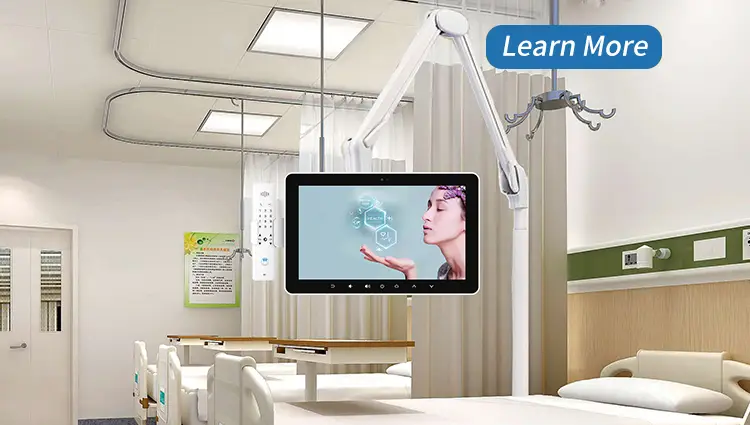The integration of smart terminals into healthcare systems has revolutionized the way patients and doctors interact. By leveraging advanced technologies such as 5G connectivity, artificial intelligence (AI), and real-time data analytics, these devices bridge communication gaps, enhance diagnostic accuracy, and streamline care delivery. This article explores the multifaceted role of smart terminals in fostering effective patient-doctor communication, supported by technological advancements and practical applications.
1. Technological Foundations of Smart Terminals
Smart terminals rely on high-speed, low-latency communication networks like 5G to transmit large volumes of medical data seamlessly. For instance, 5G’s higher bandwidth enables real-time sharing of high-resolution imaging (e.g., MRI scans) between specialists, reducing delays in diagnosis Additionally, AI algorithms embedded in these terminals analyze patient histories and symptoms, providing doctors with actionable insights during consultations.
A study by the Journal of Telemedicine and Telecare (2024) found that hospitals using AI-powered terminals reduced misdiagnosis rates by 22% compared to traditional methods. Such tools also empower patients to input symptoms via user-friendly interfaces, ensuring their concerns are accurately captured before consultations.
2. Enhancing Accessibility in Remote and Underserved Areas
In rural regions with limited healthcare infrastructure, smart terminals serve as lifelines. For example, mobile clinics equipped with portable terminals enable doctors to conduct virtual consultations via 5G-enabled platforms, addressing conditions ranging from chronic diseases to emergencies. In China’s mountainous provinces, such systems have cut average patient wait times from 14 days to 48 hours.
Moreover, wearable devices synced to terminals—such as glucose monitors for diabetics or ECG patches for cardiac patients—transmit real-time data to physicians. This continuous monitoring allows for proactive interventions, preventing complications. A 2023 WHO report highlighted that remote monitoring reduced hospital readmissions by 35% in stroke survivors.
3. Streamlining Clinical Workflows
Smart terminals eliminate bureaucratic bottlenecks by automating administrative tasks. Electronic health records (EHRs) updated in real time ensure doctors access the latest patient data during visits. For instance, the Getinge Servo-U ventilator integrates with hospital terminals to auto-adjust settings based on lung compliance metrics, freeing clinicians to focus on patient interaction.
In emergency departments, terminals equipped with natural language processing (NLP) transcribe doctor-patient conversations directly into EHRs. This reduces documentation time by 40%, as noted in a 2024 NEJM study. Patients also benefit from transparent communication, as they receive instant summaries of their diagnoses and treatment plans via secure portals.
4. Ethical and Practical Challenges
Despite their advantages, smart terminals face hurdles. Data privacy remains a critical concern, particularly with cross-border telemedicine. Strict compliance with regulations like GDPR and HIPAA is essential to protecting sensitive health information. Additionally, older patients or those in low-resource settings may struggle with digital literacy, necessitating tailored training programs.
Technical limitations, such as inconsistent 5G coverage in remote areas, also hinder adoption. Governments and tech firms must collaborate to expand infrastructure—a lesson from Sweden’s Getinge Group, which partners with rural clinics to deploy offline-capable terminals.
5. Future Directions
The next generation of smart terminals will likely incorporate augmented reality (AR) for immersive consultations. Imagine a dermatologist examining a 3D hologram of a rash or a surgeon guiding a colleague through a procedure via AR overlays. Blockchain technology could further secure data sharing across institutions, building patient trust.
Conclusion
Smart terminals are redefining patient-doctor communication by merging cutting-edge technology with human-centric design. From remote diagnostics to AI-driven decision support, these tools enhance care quality while addressing systemic inefficiencies. As the healthcare industry evolves, continuous innovation and ethical oversight will ensure smart terminals remain pivotal in achieving equitable, patient-centered care.

